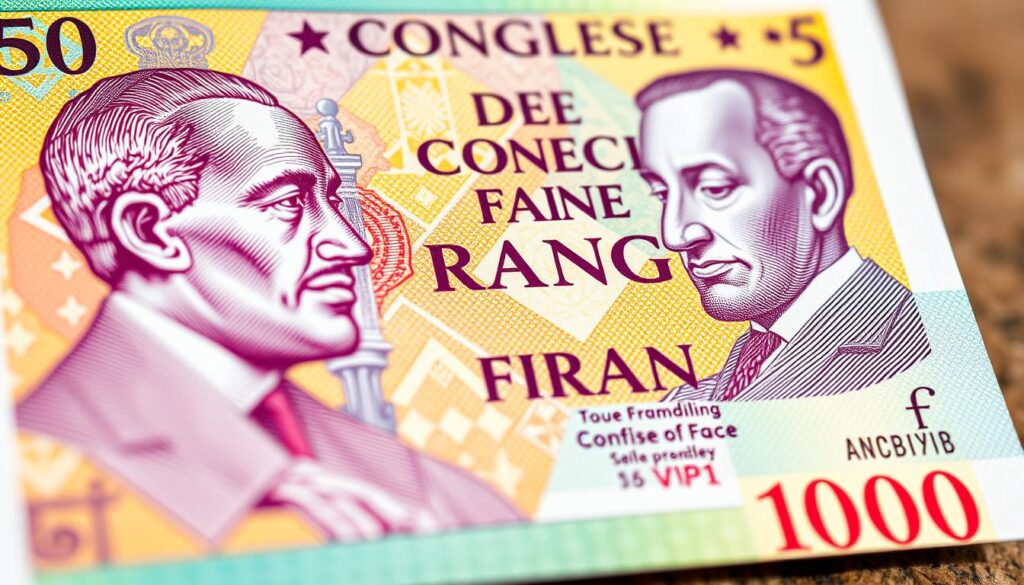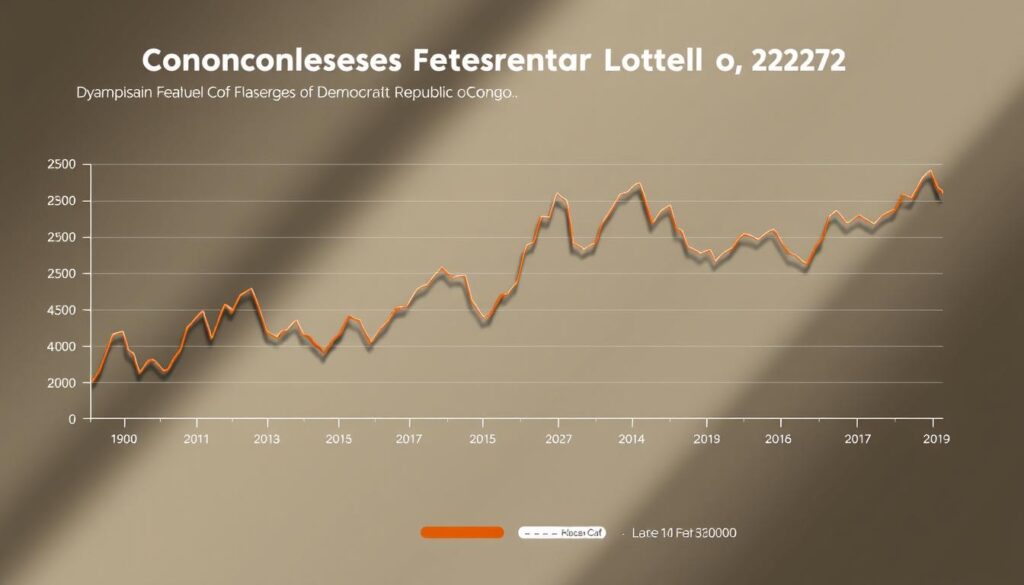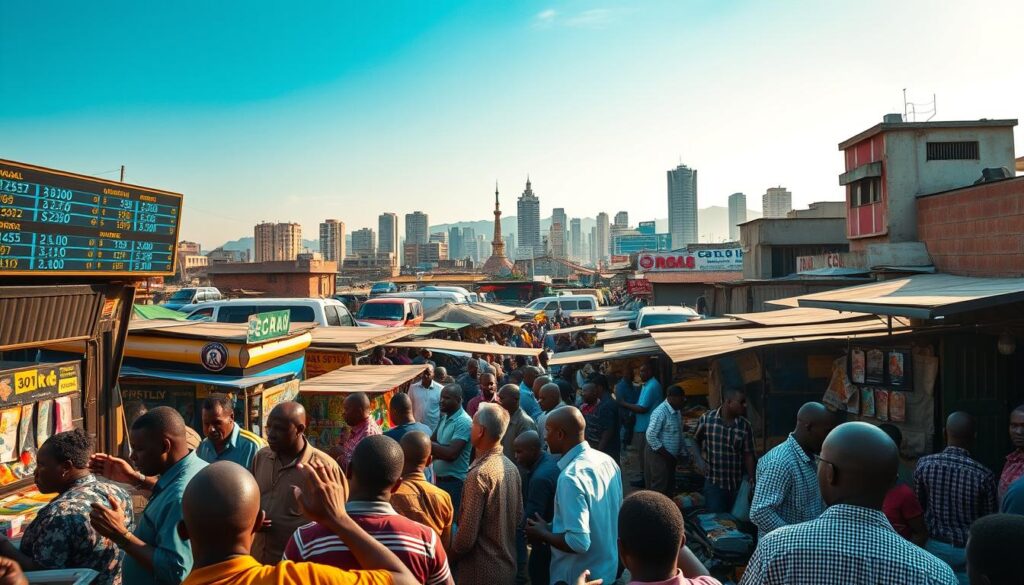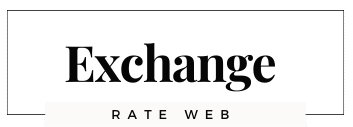
The Congolese Franc (CDF) is the official money of the Democratic Republic of Congo. This country is full of natural resources and is in Central Africa.
The Central Bank of Congo (Banque Centrale du Congo) makes and controls the currency. It is the country’s central bank.
Knowing about the Congolese Franc is key for anyone into the country’s economy. Or if you’re planning to deal with money in the DRC.
Key Takeaways
- The Congolese Franc is the official currency of the Democratic Republic of Congo.
- The Central Bank of Congo is responsible for issuing and managing the currency.
- The Congolese Franc plays a vital role in the country’s economy.
- Understanding the currency is essential for financial transactions in the DRC.
- The Democratic Republic of Congo is rich in natural resources.
The History and Evolution of the Congolese Franc
The Congolese Franc’s history is tied to the country’s fight for freedom and economic hurdles. Knowing its beginnings and key events helps us see where it stands today.
Colonial Currency Origins
The Congolese Franc started during Belgian rule. Back then, the Congo used the Belgian Franc. The Congolese Franc became its own currency, a big step towards financial freedom.
This change was part of making the Congo its own, both financially and culturally.
Post-Independence Monetary Developments
After gaining freedom in 1960, the Congo faced tough economic times. Inflation and the value of money dropping were big problems. The Zaire was introduced in 1967 to replace the Congolese Franc.
But, the Zaire couldn’t handle the high inflation and economic troubles. So, in 1997, the Congolese Franc came back. This was to help the economy and make people trust the money again.
Currency Reforms Through Political Changes
The Congolese Franc has seen many changes due to politics and money issues. These changes include new designs, security features, and money values. The country’s ups and downs have affected the Franc’s value and stability.
It’s important to understand these past events to know where the currency is now and its role in the economy.
Understanding the Democratic Republic of Congo National Currency
The Congolese Franc is the national currency of the Democratic Republic of Congo. It is key to the country’s economy. It serves as the official medium of exchange.
Official Status and Recognition
The Congolese Franc is the legal tender in the Democratic Republic of Congo. The country’s central bank issues and regulates it. This makes it the official currency.
Using the Congolese Franc shows the country’s economic sovereignty. It lets the government set monetary policies that fit the country’s needs.
ISO Code and International Designation
The Congolese Franc has the ISO 4217 code “CDF.” This code helps in global financial dealings. It makes the currency easier to use in foreign markets.
Having a standard ISO code simplifies currency exchange. It makes it easier for international businesses and travelers to handle the Congolese Franc.
Relationship with Other Regional Currencies
The Congolese Franc has a floating exchange rate. Its value changes based on market forces. This lets the currency adjust to economic and political changes.
It’s different from the Central African Franc (CFA Franc) used by other countries. The Congolese Franc’s independent status shows the country’s control over its money.
Knowing how the Congolese Franc relates to other African currencies is important. It helps businesses and investors understand the economic scene. This knowledge aids in making smart decisions.
The Central Bank of Congo: Monetary Authority and Policies
The Central Bank of Congo plays a big role in the country’s economy. It controls the Congolese Franc, keeping the economy stable.
Institutional Structure and Governance
The Central Bank of Congo has a clear structure for good governance. It has a board of directors that guides the bank’s actions and decisions.
The bank’s setup helps it achieve its main goals. These include keeping prices stable and the financial system sound. It uses various tools and rules to do this.
Recent Policy Announcements
The Central Bank of Congo has made big policy changes. These aim to strengthen the Congolese Franc and boost the economy. They include better foreign exchange management and a more efficient financial system.
- Introduction of new exchange rate mechanisms
- Strengthening of banking regulations
- Initiatives to increase financial inclusion
These moves show the bank’s dedication to meeting economic challenges. It’s all about adapting to new situations and solving problems.
Currency Issuance and Control Mechanisms
The Central Bank of Congo issues the Congolese Franc. It uses many ways to stop counterfeiting and keep the currency real.
Some important steps include:
- Advanced security features in banknotes and coins
- Regular monitoring of currency circulation
- Collaboration with law enforcement agencies to combat counterfeiting
Managing currency well is key to trust in the Congolese Franc. It helps keep the economy stable.
Current Denominations and Circulation
Knowing the different Congolese Franc denominations is key to understanding the country’s money system. The Franc comes in various forms to meet different transaction needs.
Banknotes in Today’s Economy
The Congolese Franc has banknotes from 1 Franc to 20,000 Francs. You can find banknotes in values like 1, 5, 10, 20, 50, 100, 200, 500, 1,000, 5,000, 10,000, and 20,000 Francs. These help with everything from small buys to big deals.
These banknotes are vital in the Congolese economy. Smaller ones are used in local markets, while bigger ones are for bigger deals.
Coin Usage and Availability
The Congolese Franc also comes in coins. You can find coins in values of 1, 5, 10, 20, and 50 Francs. Even though coins are used less than banknotes, they’re still important for small purchases.
Coins add flexibility to the currency system, making everyday transactions easier. But, they’re not as common as banknotes, mainly because of the preference for cash in smaller amounts.
Commemorative and Special Edition Releases
The Central Bank of Congo sometimes releases special banknotes and coins. These are for big events or anniversaries. They celebrate national pride and offer something special for collectors.
These special issues add cultural and historical value to the currency. They make it more than just money. They also help preserve the Democratic Republic of Congo’s numismatic heritage.
Security Features and Anti-Counterfeiting Measures
The Congolese Franc has seen big changes to fight against fake money. These updates are key to keeping the currency safe.
Advanced Security Technologies
The Congolese Franc uses top-notch security like watermarks, holograms, and microprinting. These make it hard for fake money makers to get it right.
Also, special inks that change color under different lights add more security. These techs help keep ahead of fake money makers.
Cultural Symbolism in Design Elements
The Congolese Franc’s design shows off the country’s culture. It has famous figures and places that matter to Congolese history.
These designs make the money look good and show off the nation’s values.
Recent Updates to Currency Security
New security features have been added to the Congolese Franc. These updates make the money even safer. They include better security tech and new ways to stop fake money.
The Central Bank of Congo keeps checking and improving the money’s security. They make sure it stays safe and reliable.
Latest Exchange Rate Developments
The value of the Congolese Franc has changed due to many economic factors. These include the prices of copper and cobalt. Since the Democratic Republic of Congo is a big producer of these metals, global price changes affect its currency’s value.

Current Conversion Rates to Major Currencies
The Congolese Franc’s exchange rates to big currencies like the US Dollar, Euro, and British Pound have changed. Here are the current rates: 1 USD = about 2,000 CDF, 1 EUR = about 2,200 CDF, and 1 GBP = about 2,500 CDF. These rates can change based on market conditions.
2023-2024 Value Fluctuations
In the last year, the Congolese Franc’s value has gone up and down against major currencies. Changes in commodity prices and inflation rates have caused these changes. For example, when copper prices go up, the Franc gets stronger. But when prices drop, its value falls.
The Franc’s value against the US Dollar has also changed a lot. These changes are due to both local economic policies and global market trends. It’s important for investors and businesses in the area to understand these changes.
Expert Forecasts and Projections
Experts think the Franc will keep being affected by global commodity prices and local economic policies. They predict the currency might stabilize soon. This depends on steady commodity prices and good policies from the Central Bank of Congo.
Analysts believe the Franc’s performance will closely follow the mining sector and the government’s inflation response. So, keeping an eye on these areas is key to guessing future exchange rate changes.
The Congolese Franc in Everyday Economic Life
The Congolese Franc is key in the daily economy of the Democratic Republic of Congo. It’s used for everything from small market deals to big business transactions.
Urban vs. Rural Currency Usage Patterns
In cities like Kinshasa, the Congolese Franc is widely accepted. But, in rural areas, it’s harder to find because of poor banking.
Key differences in currency usage between urban and rural areas include:
- Limited access to banking services in rural areas
- Higher reliance on cash transactions in rural areas
- Greater acceptance of alternative currencies in rural border regions
Dollarization Challenges in Local Markets
The Democratic Republic of Congo struggles with dollarization in local markets. Using both the US dollar and the Congolese Franc makes things tough for the economy.
The challenges of dollarization include:
- Increased volatility in the exchange rate
- Reduced effectiveness of monetary policy
- Potential for currency devaluation
Digital Payment Adoption and Traditional Currency
Digital payments are growing in the Democratic Republic of Congo. This could help solve some problems with traditional currency.
As a financial expert said, “Digital payments in Congo are a good thing. They help more people access money and cut down on cash use.”
“The shift towards digital payments is expected to continue, driven by improvements in telecommunications infrastructure and increasing demand for convenient financial services.”
The mix of digital payments and traditional currency will shape the future of the Congolese Franc.
Economic News Affecting the Congolese Currency
The value of the Congolese Franc is greatly affected by economic news, especially in the mining sector. The Democratic Republic of Congo’s economy depends a lot on exporting things like copper, cobalt, tin, tungsten, and tantalum.
Recent Mining Sector Developments and Currency Impact
Recent mining sector news has had a big impact on the Congolese Franc. For example, a rise in global demand for cobalt has led to more mining. This has helped increase the currency’s value.
- More mining production has helped the economy grow.
- Changes in global commodity prices affect the Franc’s value.
- Investment in mining has brought in foreign capital.

International Trade Agreements and Monetary Effects
International trade agreements also play a big role in the Congolese Franc. Deals that make trade easier can strengthen the currency by boosting export earnings.
- Trade agreements with big economies can increase export volumes.
- Lowering tariffs can make Congolese goods more competitive worldwide.
- Good diplomatic trade relations can draw in foreign investment.
Inflation Trends and Government Responses
Inflation trends are also key to the Congolese Franc. The government and central bank watch inflation closely. They use policies to keep the economy stable.
- High inflation can reduce the currency’s buying power.
- Monetary policies, like changing interest rates, help control inflation.
- Fiscal policies aim to stabilize the economy and support the currency.
The mix of these economic factors shows how complex managing the Congolese Franc is. As the economy changes, understanding these factors is key to predicting the currency’s future stability.
Banking System Reforms and Currency Stability
The Democratic Republic of Congo has made big changes in its banking system. These changes aim to make the Congolese Franc more stable. The goal is to make the country’s financial system stronger and more resilient.
Recent Banking Sector Initiatives
The Central Bank of Congo has launched several projects to update the banking sector. They’ve worked on making rules clearer, supervising banks better, and improving financial systems. These steps are meant to make the banking system more stable and trustworthy.
Key Initiatives:
- Enhanced regulatory frameworks to comply with international standards
- Improved supervision to prevent financial crimes
- Investment in financial infrastructure to facilitate transactions
Foreign Exchange Controls and Regulations
To keep the Congolese Franc stable, the Central Bank has put in place foreign exchange controls. These controls help manage how much foreign currency comes in and goes out. This helps keep the exchange rate steady.
The rules also watch over foreign exchange transactions. They make sure these transactions fit with the country’s economic goals.
Impact on Currency Accessibility for Citizens
The banking reforms have mixed effects on people’s access to the Congolese Franc. Better banking services make it easier for people to use the Franc. But, foreign exchange controls sometimes cause foreign currency shortages. This affects businesses and people who need it for imports and other deals.
| Aspect | Pre-Reform | Post-Reform |
|---|---|---|
| Banking Infrastructure | Limited access to financial services | Improved access to banking services |
| Foreign Exchange | High volatility in exchange rates | Managed exchange rates through controls |
| Currency Stability | Frequent fluctuations | Relative stability achieved |
The Democratic Republic of Congo is working hard to stabilize its currency through banking reforms. These efforts show the country’s dedication to a strong financial system. Despite ongoing challenges, the progress made is a good sign for the future of the Congolese Franc.
Regional Comparison: How the Congolese Franc Performs Against Other African Currencies
The Congolese Franc’s performance against other African currencies shows the country’s economic health. The Democratic Republic of Congo is part of regional economic groups. These groups aim to integrate economies and possibly harmonize currencies.
Comparative Analysis with Central African Currencies
The Congolese Franc is used with other currencies in the Central African region. The Central African Franc (CFA) is used by several neighboring countries. A comparison of these currencies shows their strengths and weaknesses.
| Currency | 2023 Average Exchange Rate (1 USD) | 2024 Forecasted Exchange Rate (1 USD) |
|---|---|---|
| Congolese Franc (CDF) | 2,000 | 2,100 |
| Central African Franc (XAF) | 550 | 560 |
| Other African Currencies | Varies | Varies |
The table shows the average exchange rates of the Congolese Franc and the Central African Franc against the US Dollar. It shows the Central African Franc is more stable than the Congolese Franc.
Economic Integration Efforts and Currency Implications
Economic integration in the Central African region affects the Congolese Franc. Harmonizing currencies could make trade and investment easier in the region.
Key implications include:
- Increased trade due to simplified currency exchange
- Potential for a more stable regional currency
- Challenges in monetary policy coordination among member states
The future of the Congolese Franc will be influenced by the success of these regional economic integration efforts.
Conclusion: Future Prospects for the Congolese Franc
The future of the Congolese Franc, the currency of the Democratic Republic of Congo, looks promising. It depends on the country’s economic stability and its efforts to integrate with the region.
The Franc has seen many changes since it was first introduced. These changes were influenced by the country’s politics and economy. The Central Bank of Congo is key in managing the currency and setting monetary policies.
The Franc’s performance is tied to the country’s economic health. This includes inflation rates and how the mining sector is doing. The currency also gets affected by the country’s efforts to work together with its neighbors.
The Franc’s success will depend on the country’s ability to keep its economy stable. It needs to have effective monetary policies in place. The currency’s future is closely tied to the Democratic Republic of Congo’s economic health and its role in the regional economy.
As the country faces economic challenges and opportunities, the Franc will play a big role in its economy. It will show the nation’s progress and growth.
FAQ
What is the national currency of the Democratic Republic of Congo?
The national currency of the Democratic Republic of Congo is the Congolese Franc.
What is the role of the Central Bank of Congo in managing the Congolese Franc?
The Central Bank of Congo manages the Congolese Franc. It keeps its value stable and makes monetary policies.
What was the previous currency used in the Democratic Republic of Congo before the Congolese Franc?
Before 1997, the Zaire was used. It was replaced by the Congolese Franc.
What is the ISO code for the Congolese Franc?
The ISO code for the Congolese Franc is CDF.
How does the Congolese Franc’s value fluctuate?
The Congolese Franc’s value changes based on market conditions. It has a floating exchange rate.
What are the current denominations of the Congolese Franc in circulation?
The Congolese Franc comes in various banknotes and coins. These are used for daily transactions.
What security features are incorporated into the Congolese Franc to prevent counterfeiting?
The Congolese Franc has advanced security features. These include cultural designs to prevent counterfeiting and ensure authenticity.
How is the Congolese Franc used in urban versus rural areas?
In urban areas, the Congolese Franc is used more. Rural areas often use digital payment systems more.
What is dollarization, and how does it affect the Congolese Franc in local markets?
Dollarization is using the US dollar instead of the Congolese Franc. It challenges the Franc’s value and stability in local markets.
What recent economic developments have affected the Congolese Franc?
Mining sector changes, trade agreements, and inflation have affected the Congolese Franc’s value and stability.
How do banking system reforms impact the stability of the Congolese Franc?
Banking reforms aim to stabilize the Congolese Franc. They include foreign exchange controls and regulations to improve currency access for citizens.
How does the Congolese Franc perform compared to other African currencies?
The Congolese Franc’s performance is compared to other African currencies. This is part of economic integration efforts.
What are the future prospects for the Congolese Franc?
The Congolese Franc’s future depends on economic stability and political coherence. Success in monetary policies by the Central Bank of Congo is also key.

Adam G
This post was created by Adam G, a seasoned financial writer with a passion for explaining currency exchange and market movements
